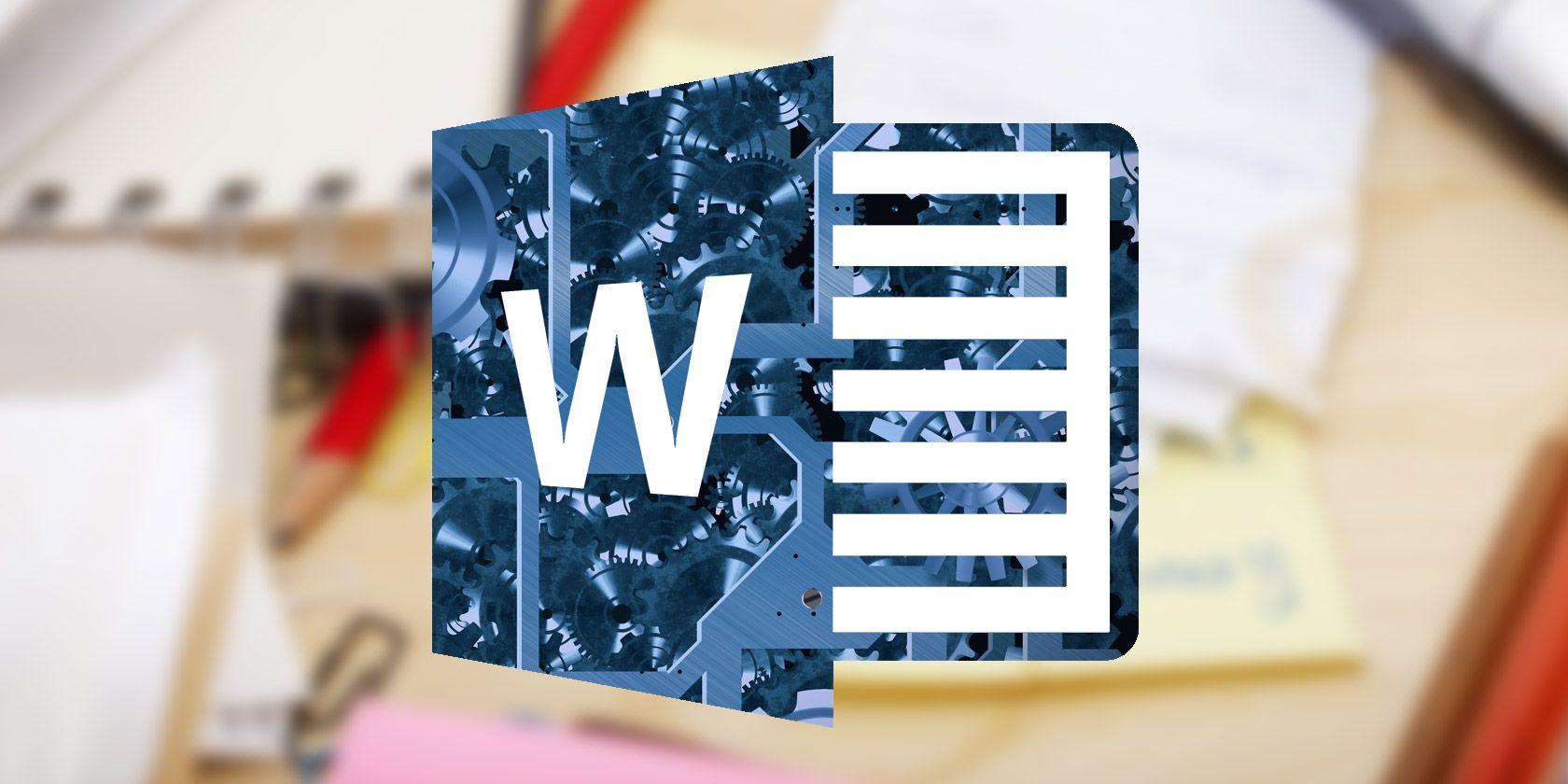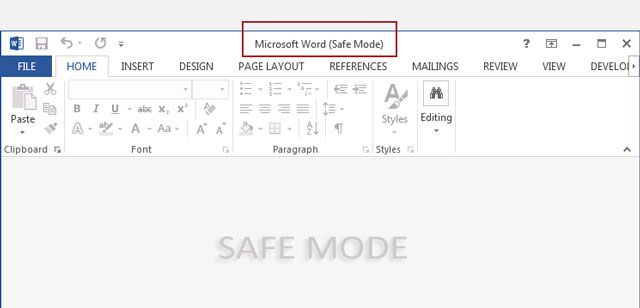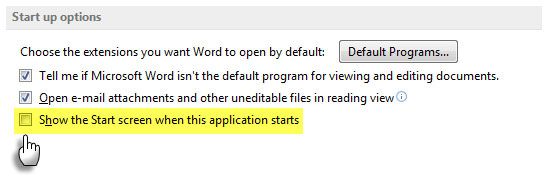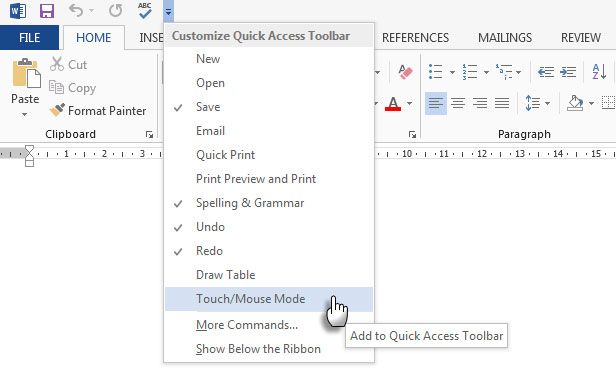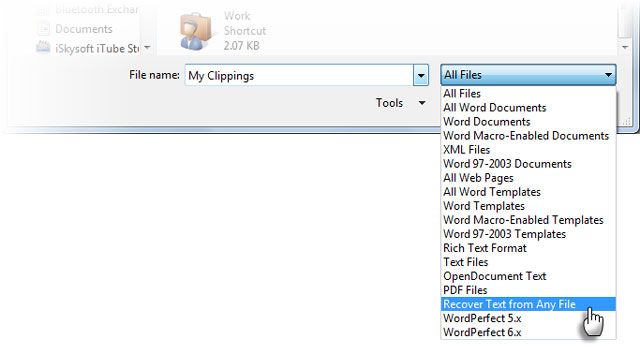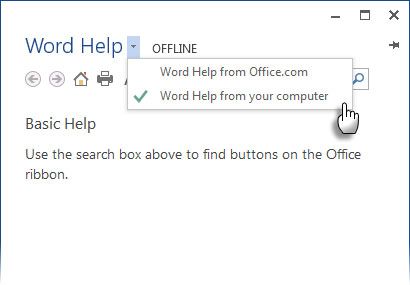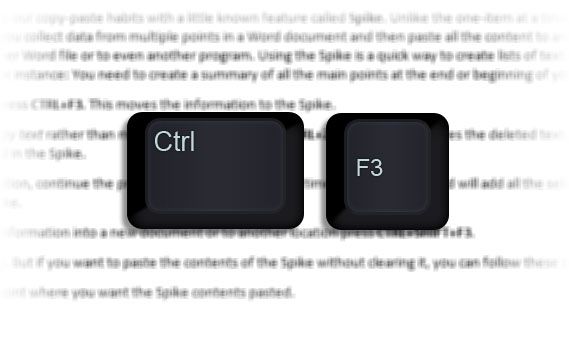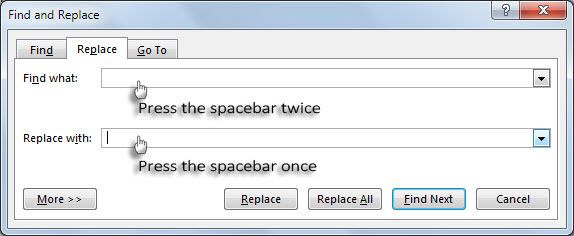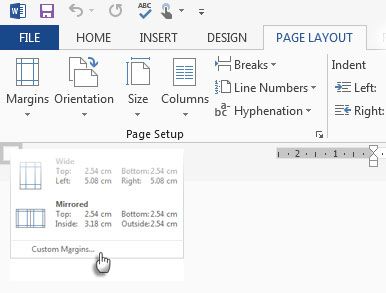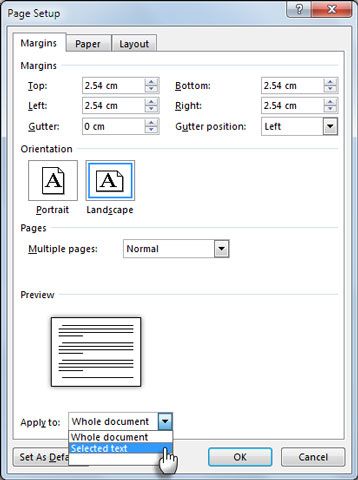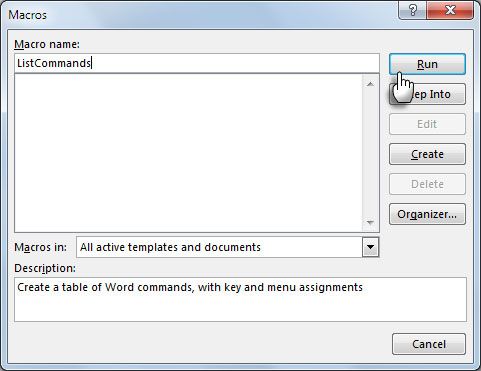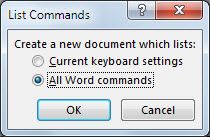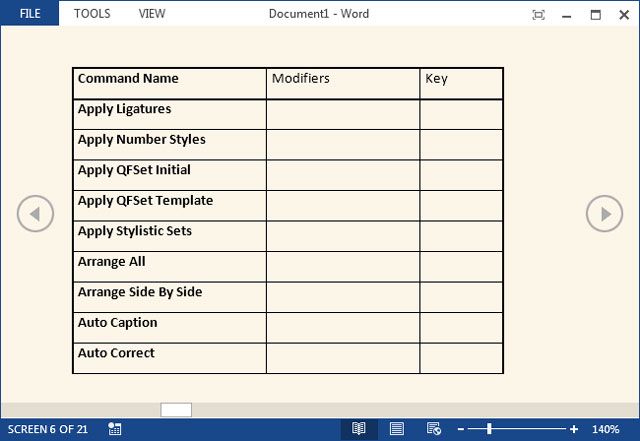Do you think we would have finished with the Games of Thrones fantasy series if George R.R Martin had ditched his archaic WordStar 4.0?
And took up Microsoft Word instead?
This is a just a flight of imagination because we associate productivity with the common tools we use daily. There are far better tools for authors than Microsoft Word. Scrivener (our Scrivener review) may be a better tool for writers. LaTeX might take the crown for academics. For the everyman it is the versatility of Word that matters when he clocks into his office.
Microsoft Word is as adroit as its user. Like we have seen, you can even use it to create flowcharts and mindmaps. This switch-hitting requires that you know your way around the Office suite. Step up to the plate and take a swing with these ten simple Microsoft Word "hacks."
The Microsoft Office Safe Mode
You can always start Microsoft Word in Safe Mode. One of the more common uses is to disable a Word add-in that's behaving erratically. You can also use the Safe Mode to suppress any customizations made to the program. Personally, I use it when I need to take screenshots of the default Word instead of my customized screen.
Starting in Safe Mode is simple: hold down the CTRL key and start Word by double-clicking the button for the program. Keep the CTRL key pressed until the Safe Mode dialog box appears. A quicker way is to type
winword /safe
in the Windows Run box.
To leave Safe Mode, exit Word and then re-open Word as you do normally.
Disable The Start Screen
The Start Screen can be an annoyance for regular Word users. But worry not because disabling it is a one second affair. Go to Ribbon > File > Options > General.
Under Start up options, click to remove the check beside Show the Start screen when this application starts. Click OK.
The Touch / Mouse Mode for More Precise Taps
Large fingers and a touch enabled screen – that's a recipe for a few disastrous taps. Word 2013 offers a Touch / Mouse toggle that makes working on touch enabled screens far easier by enlarging the buttons and increasing the distance between them. Toggle the mode by following the steps below.
Click on the drop-down arrow on the right side of the Quick Access Toolbar and select Touch/Mouse Mode from the list.
Once the Touch / Mouse toggle appears on the Quick Access toolbar, click the little arrow next to it to choose between the Touch Mode and the Mouse Mode.
Choosing the Touch Mode expands the Ribbon and makes tapping easier. The better Ribbon visibility is also useful for elderly users.
Salvage "Lost" Documents
Right off the bat, you should know how to recover an unsaved Word file or save a corrupted Office file. As a last ditch effort, you should also add the Recover Text from Any File method to the lifesavers. The Recover Text from Any File converter helps to extract the raw text from any file. Do note that this is different from the Open and Repair feature. The good thing is, the file does not have to be a Word document.
Go to File > Open. Select the damaged file and access the Recover Text from Any File command from the File type list next to the File name text box.
You should be able to retrieve the format-less data in ASCII. Graphics, fields, drawing objects, and so on are not converted. Headers, footers, footnotes, endnotes, and field text are recovered as simple text. This method is limited to documents in the Word 97-2003 format (it won't work on not .docx or .dotx files -- but there is a workaround for that).
Choose Between Online Help vs. Offline Help
By default, Word assumes that you would like to take online help when you are stuck. That can easily turn out to be an annoyance when you aren't online or on a slow connection. Even though, the online Help resource is far broader in scope compared to the local Word Help. Force Word to display the offline basic Help files stored in your computer with a simple switch.
Press F1 to display the Help screen and click the drop-down arrow beside Word Help. Choose Word Help from computer.
Do note that you can always pin the Help screen to the top of the document and continue working while looking at the instructions on the Help screen.
Copy and Paste Text Without Touching the Clipboard
Here's a common daily scenario. You copied a huge batch of data from Excel and it's waiting on the clipboard for a simple paste into Word. But wait – you also need to move or copy some other text first. Here's a simple method that saves you from overwriting what's on the clipboard.
Highlight the part of the document that you want to move or copy to the new location. Keep it highlighted. Then navigate to the location in your document to where you want to move or copy the text. Don't click here, yet.
- To move the text: Press CTRL key and right click on the new location. Alternatively, press F2 > Move to the location > Press Enter.
- To copy the text: Press CTRL+SHIFT and right click on the new location. Alternatively, press SHIFT+ F2 > Move to the location > Press Enter.
Now, you can do the usual copy-paste routine to bring the clipboard data into your document.
This is just one of the many ways to copy and paste content. An efficient copy-paste routine is the simplest way to be more time efficient in Microsoft Word.
A More Powerful Clipboard with Spike
We continue to improve our copy-paste habits with a little known feature called Spike. Unlike the one-item at a time nature of the Clipboard, Spike helps you collect data from multiple points in a Word document and then paste all the content to another location in that document or into another Word file or to even another program.
Using the Spike is a quick way to create lists of text collected from different parts of a document. For instance: You need to create a summary of all the main points at the end or beginning of your document.
Highlight the text and press CTRL+F3. This moves the information to the Spike.
Note: If you want to copy text rather than move it, immediately press CTRL+Z (Undo). This restores the deleted text, but does not affect the copy of it already stored in the Spike.
To collect more information, continue the process with CTRL+F3 as many times as you want. Word will add all the selected text to what already exists in the Spike.
To paste the collected information into a new document or to another location press CTRL+SHIFT+F3.
The Spike is now empty. But if you want to paste the contents of the Spike without clearing it, you can follow these steps:
- Position the insertion point where you want the Spike contents pasted.
- Type Spike.
- Press F3.
The Spike is an AutoText entry. As long as you don't wipe it empty with the Ctrl+Shift+F3 shortcut, the contents are retained even when you close Word or reboot Windows.
Here's a video explanation from YouTube:
Remove Double Spaces
As an editor and writer, double spaces are one of my pet gripes. Double spaces are archaic and they shouldn't exist after periods. It should be a single space – ALWAYS. With Find and Replace, you can switch all instances of double spaces to single.
Select all text in the document. Open Find and Replace from the Navigation pane (View > Show > Navigation Pane) or press CTRL+H. Place your cursor in the Find what field, then press the Spacebar twice to insert two spaces. Place your cursor in the Replace with field, then press the Spacebar once.
Click Replace All to clear all the double spaces.
Use Portrait and Landscape in the Same Document
This is an old tip, but a good one. Sometimes I find that using portrait and landscape orientation in the same document helps to accommodate larger charts, graphs, or timeline diagrams. It can be a larger table or wide illustrations, too. Using the same orientation helps to avoid creating an additional document to accommodate the wider content.
Select the pages or paragraphs that you want to change to portrait or landscape orientation.
Go to Page Layout > Page Setup > Click Margins and select Custom Margins.
On the Margins tab, click Portrait or Landscape.
In the Apply to list, click Selected text.
Word uses section breaks to give the selected text their orientation. So, if you select a part of the text on a page (but not the whole page), Word places the selected text on its own page, and the surrounding text on separate pages.
Get the Full List of All Word Commands
You might not find use for the obscure List Commands in your day to day use of Word. But this simple but powerful feature can be a great way to expand your Word knowledge. This command creates a new Word document with a full list of Word's commands. You can save this Word document, and search through it to understand the use of commands you don't know about.
Go to File > Options > Customize Ribbon. Under the Main Tabs list, check Developer to show it on the Ribbon. Click OK. Then go to Ribbon > Developer tab > Code group > Macros and in the Macros dialog box, type ListCommands.
Click Run. This causes the List Commands dialog box to appear.
To list all commands, click All Word commands, and then click OK. Word creates a new document with all commands laid out in a neat table. The three column heads are -- Command Name, Modifiers, and Key.
You can go through the alphabetical list and see the commands you do not understand or to check for commands that were in older versions of Word. As a Word document, the entire list is searchable. I personally find browsing through the list more comfortable than drilling down the Customize Ribbon dialog. Try it in Read Mode.
This is Not The Last Word At All!
The Advanced dialog box under Word Options has 150 commands alone. That's a clue to the extend of the learning curve with Microsoft Word. But the effort is worth it because Word has made our lives easier for the last thirty years. So, let's continue to explore the depths of this productivity software and find ways to use it better. That's where you come in.
Did you know about any of the above tips? Tell us your favorite Word tip. It can be as a simple as SHIFT+F3 or as complex as a VBA code. We are all ears!

